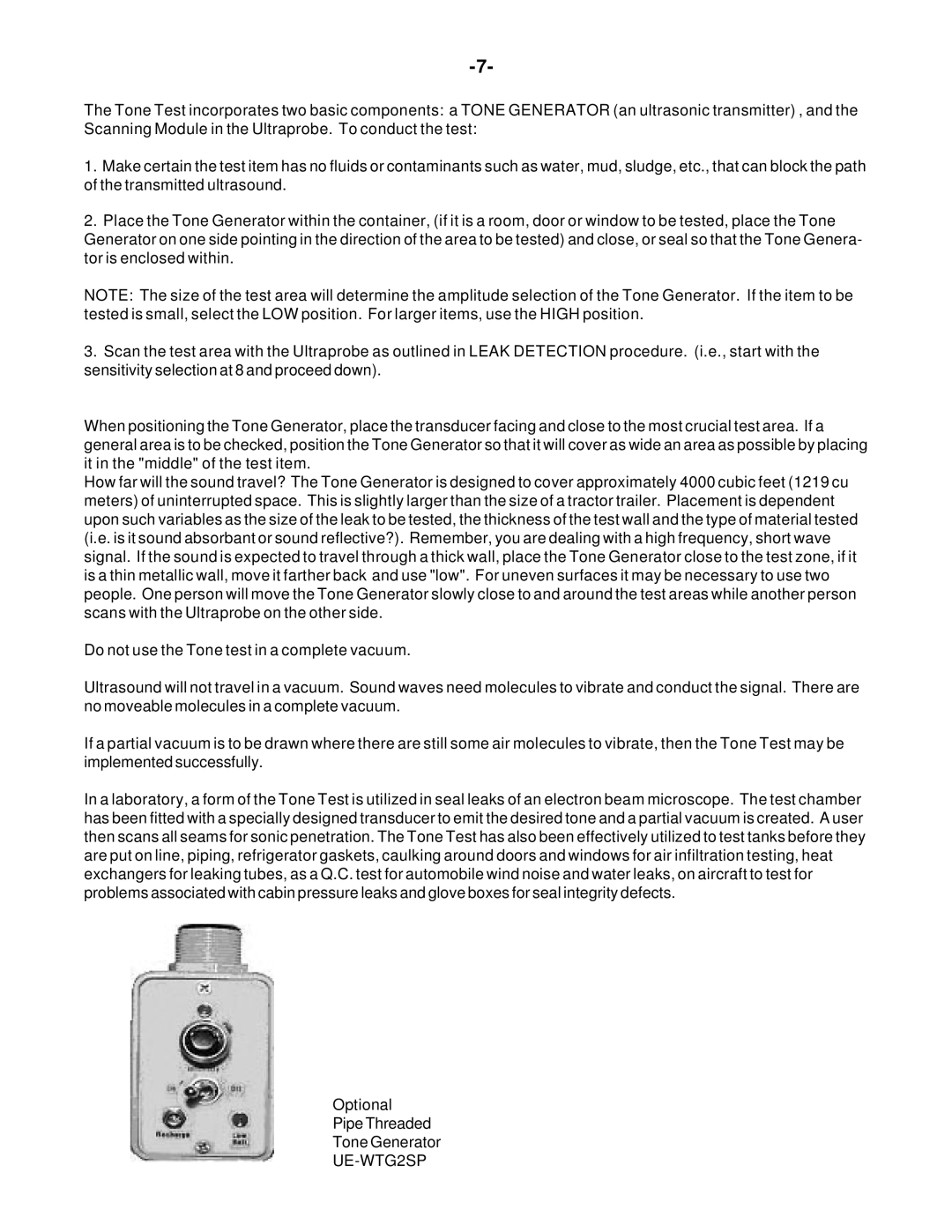
The Tone Test incorporates two basic components: a TONE GENERATOR (an ultrasonic transmitter) , and the Scanning Module in the Ultraprobe. To conduct the test:
1.Make certain the test item has no fluids or contaminants such as water, mud, sludge, etc., that can block the path of the transmitted ultrasound.
2.Place the Tone Generator within the container, (if it is a room, door or window to be tested, place the Tone Generator on one side pointing in the direction of the area to be tested) and close, or seal so that the Tone Genera- tor is enclosed within.
NOTE: The size of the test area will determine the amplitude selection of the Tone Generator. If the item to be tested is small, select the LOW position. For larger items, use the HIGH position.
3.Scan the test area with the Ultraprobe as outlined in LEAK DETECTION procedure. (i.e., start with the sensitivity selection at 8 and proceed down).
When positioning the Tone Generator, place the transducer facing and close to the most crucial test area. If a general area is to be checked, position the Tone Generator so that it will cover as wide an area as possible by placing it in the "middle" of the test item.
How far will the sound travel? The Tone Generator is designed to cover approximately 4000 cubic feet (1219 cu meters) of uninterrupted space. This is slightly larger than the size of a tractor trailer. Placement is dependent upon such variables as the size of the leak to be tested, the thickness of the test wall and the type of material tested (i.e. is it sound absorbant or sound reflective?). Remember, you are dealing with a high frequency, short wave signal. If the sound is expected to travel through a thick wall, place the Tone Generator close to the test zone, if it is a thin metallic wall, move it farther back and use "low". For uneven surfaces it may be necessary to use two people. One person will move the Tone Generator slowly close to and around the test areas while another person scans with the Ultraprobe on the other side.
Do not use the Tone test in a complete vacuum.
Ultrasound will not travel in a vacuum. Sound waves need molecules to vibrate and conduct the signal. There are no moveable molecules in a complete vacuum.
If a partial vacuum is to be drawn where there are still some air molecules to vibrate, then the Tone Test may be implemented successfully.
In a laboratory, a form of the Tone Test is utilized in seal leaks of an electron beam microscope. The test chamber has been fitted with a specially designed transducer to emit the desired tone and a partial vacuum is created. A user then scans all seams for sonic penetration. The Tone Test has also been effectively utilized to test tanks before they are put on line, piping, refrigerator gaskets, caulking around doors and windows for air infiltration testing, heat exchangers for leaking tubes, as a Q.C. test for automobile wind noise and water leaks, on aircraft to test for problems associated with cabin pressure leaks and glove boxes for seal integrity defects.
Optional
Pipe Threaded
Tone Generator
